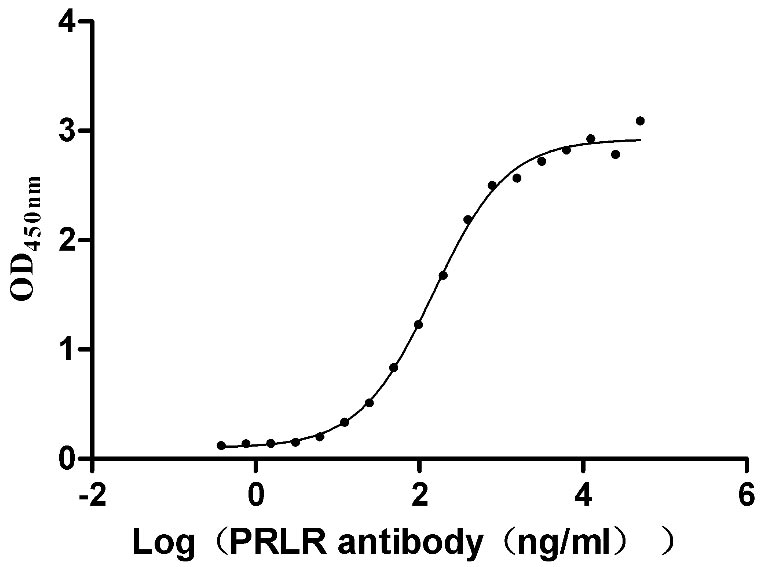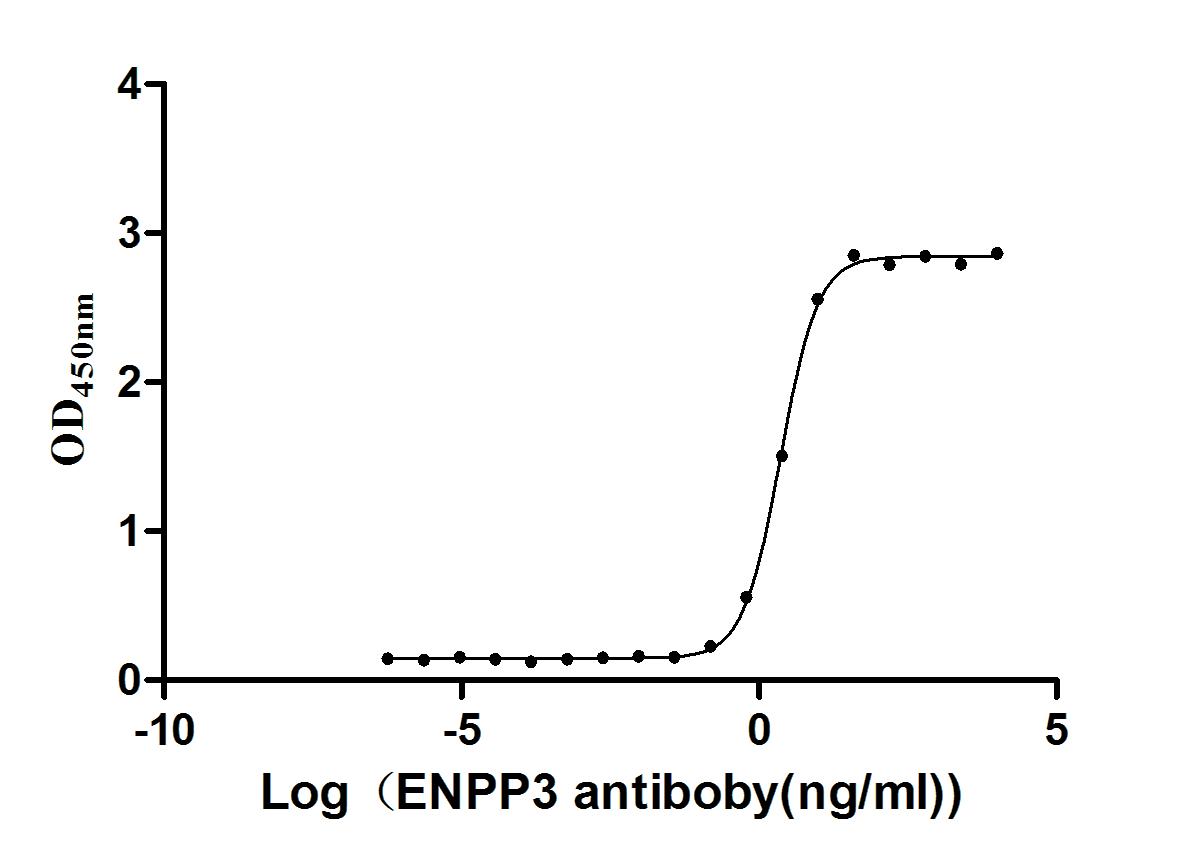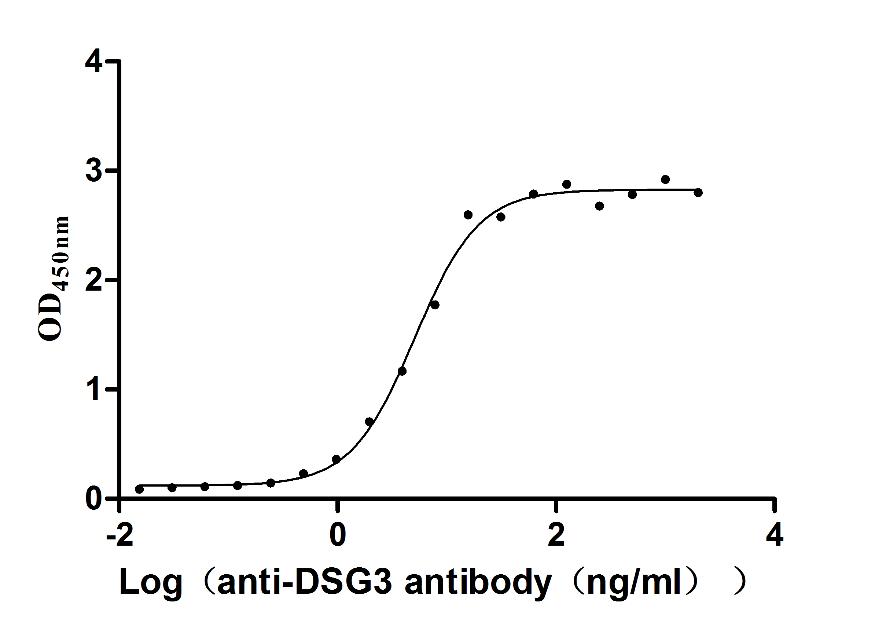Recombinant Human Clarin-1 (CLRN1)
-
中文名稱:Recombinant Human Clarin-1 (CLRN1)
-
貨號:CSB-CF005583HU
-
規格:¥9720
-
圖片:
-
其他:
產品詳情
-
純度:Greater than 85% as determined by SDS-PAGE.
-
生物活性:Not Test
-
基因名:CLRN1
-
Uniprot No.:
-
種屬:Homo sapiens (Human)
-
蛋白長度:Full Length
-
來源:in vitro E.coli expression system
-
分子量:26.7 kDa
-
表達區域:1-232aa
-
氨基酸序列MPSQQKKIIFCMAGVFSFACALGVVTALGTPLWIKATVLCKTGALLVNASGQELDKFMGEMQYGLFHGEGVRQCGLGARPFRFSFFPDLLKAIPVSIHVNVILFSAILIVLTMVGTAFFMYNAFGKPFETLHGPLGLYLLSFISGSCGCLVMILFASEVKIHHLSEKIANYKEGTYVYKTQSEKYTTSFWVIFFCFFVHFLNGLLIRLAGFQFPFAKSKDAETTNVAADLMY
Note: The complete sequence may include tag sequence, target protein sequence, linker sequence and extra sequence that is translated with the protein sequence for the purpose(s) of secretion, stability, solubility, etc.
If the exact amino acid sequence of this recombinant protein is critical to your application, please explicitly request the full and complete sequence of this protein before ordering. -
蛋白標簽:N-terminal 6xHis-tagged
-
產品提供形式:Liquid or Lyophilized powder
Note: We will preferentially ship the format that we have in stock, however, if you have any special requirement for the format, please remark your requirement when placing the order, we will prepare according to your demand. -
緩沖液:If the delivery form is liquid, the default storage buffer is Tris/PBS-based buffer, 5%-50% glycerol. If the delivery form is lyophilized powder, the buffer before lyophilization is Tris/PBS-based buffer, 6% Trehalose, pH 8.0.
-
復溶:We recommend that this vial be briefly centrifuged prior to opening to bring the contents to the bottom. Please reconstitute protein in deionized sterile water to a concentration of 0.1-1.0 mg/mL.We recommend to add 5-50% of glycerol (final concentration) and aliquot for long-term storage at -20℃/-80℃. Our default final concentration of glycerol is 50%. Customers could use it as reference.
-
儲存條件:Store at -20°C/-80°C upon receipt, aliquoting is necessary for mutiple use. Avoid repeated freeze-thaw cycles.
-
保質期:The shelf life is related to many factors, storage state, buffer ingredients, storage temperature and the stability of the protein itself.
Generally, the shelf life of liquid form is 6 months at -20°C/-80°C. The shelf life of lyophilized form is 12 months at -20°C/-80°C. -
貨期:Basically, we can dispatch the products out in 3-7 working days after receiving your orders. Delivery time may differ from different purchasing way or location, please kindly consult your local distributors for specific delivery time.
-
注意事項:Repeated freezing and thawing is not recommended. Store working aliquots at 4℃ for up to one week.
-
Datasheet & COA:Please contact us to get it.
相關產品
靶點詳情
-
功能:May have a role in the excitatory ribbon synapse junctions between hair cells and cochlear ganglion cells and presumably also in analogous synapses within the retina.
-
基因功能參考文獻:
- Study founds 1 deep intronic CLRN1 (USH3A) founder mutation generates an aberrant exon that underlies severe Usher syndrome in a family on the Arabian Peninsula. PMID: 28469144
- This is the first report of Usher syndrome type 3 with a CLRN1 gene mutation in Asian populations. PMID: 25743179
- Possible digenism could not be excluded in two families segregating genomic variations in both MYO7A and USH2A, and two families with CLRN1 and USH2A. PMID: 22681893
- Two novel mutations in the CLRN1 gene, p.R207X and p.I168N, have been found in patients with Usher syndrome type 3. PMID: 23304067
- High-resolution measures of retinal structure demonstrate patterns of cone loss associated with CLRN1 mutations. PMID: 22964989
- This study confirmed using a novel mouse model carrying a Clrn1N48K knock-in mutation to investigate the consequence of the missense mutation N48K in mCLRN1 in vivo. PMID: 22787034
- Here we describe a novel deletion in CLRN1. Our data support previously reported intra familial variability in the clinical features of Usher syndrome type I and III. PMID: 21675857
- Retinitis pigmentosa-associated mutations p.Pro31Leu and p.Leu154Trp may represent hypomorphic mutations, because substituted amino acids in transmembrane domains remain polar. PMID: 21310491
- The complexity of the CLRN1 gene and the identification of multiple splice variants may partially explain why mutations in CLRN1 result in substantial variation in clinical phenotype. PMID: 20717163
- a role for clarin-1 in hair cell and photoreceptor cell synapses, as well as a common pathophysiological pathway for different Usher syndromes PMID: 12080385
- revised structure of USH3 gene: new translation start site, 5' untranslated region, and transcript encoding 232-amino acid protein; four new disease-causing mutations; identified mouse and rat orthologues, and two human paralogues on chromosomes 4 and 10 PMID: 12145752
- USH3A and USH2A share patterns of rod and cone dysfunction and retinal structural abnormalities. PMID: 18281613
- clarin-1 has a role in the regulation and homeostasis of actin filaments PMID: 19423712
- Part of the pathogenesis of USH3 may be associated with defective intracellular trafficking as well as decreased stability of mutant CLRN1 proteins. PMID: 19753315
- Mutations in the USH3 gene underlie Usher syndrome type 3. PMID: 11524702
顯示更多
收起更多
-
相關疾病:Usher syndrome 3A (USH3A); Retinitis pigmentosa 61 (RP61)
-
亞細胞定位:Cell membrane; Multi-pass membrane protein.
-
蛋白家族:Clarin family
-
組織特異性:Widely expressed. Found in the retina.
-
數據庫鏈接:
Most popular with customers
-
Recombinant Human Prolactin receptor (PRLR), partial (Active)
Express system: Mammalian cell
Species: Homo sapiens (Human)
-
Express system: Mammalian cell
Species: Homo sapiens (Human)
-
Recombinant Human Interleukin-17A (IL17A) (T26A) (Active)
Express system: Baculovirus
Species: Homo sapiens (Human)
-
Recombinant Human Desmoglein-3 (DSG3), partial (Active)
Express system: Baculovirus
Species: Homo sapiens (Human)
-
Recombinant Human C-C chemokine receptor type 9 (CCR9)-VLPs (Active)
Express system: Mammalian cell
Species: Homo sapiens (Human)
-
Recombinant Human Tumor necrosis factor ligand superfamily member 15(TNFSF15) (Active)
Express system: Mammalian cell
Species: Homo sapiens (Human)





-AC1.jpg)


-AC1.jpg)









